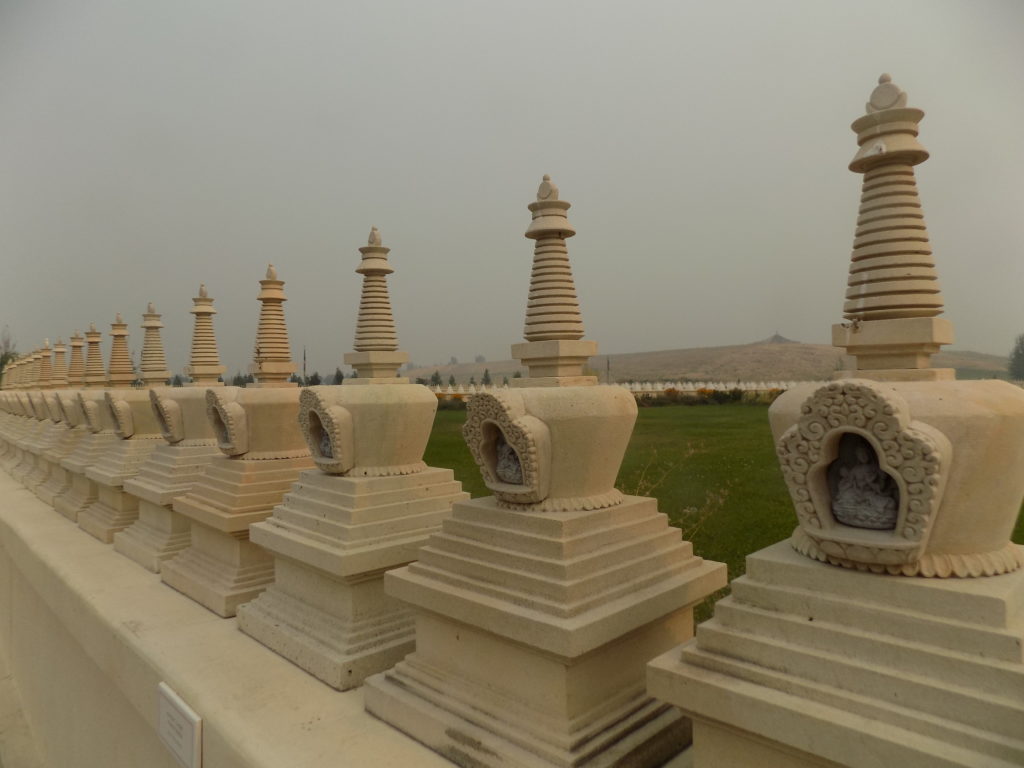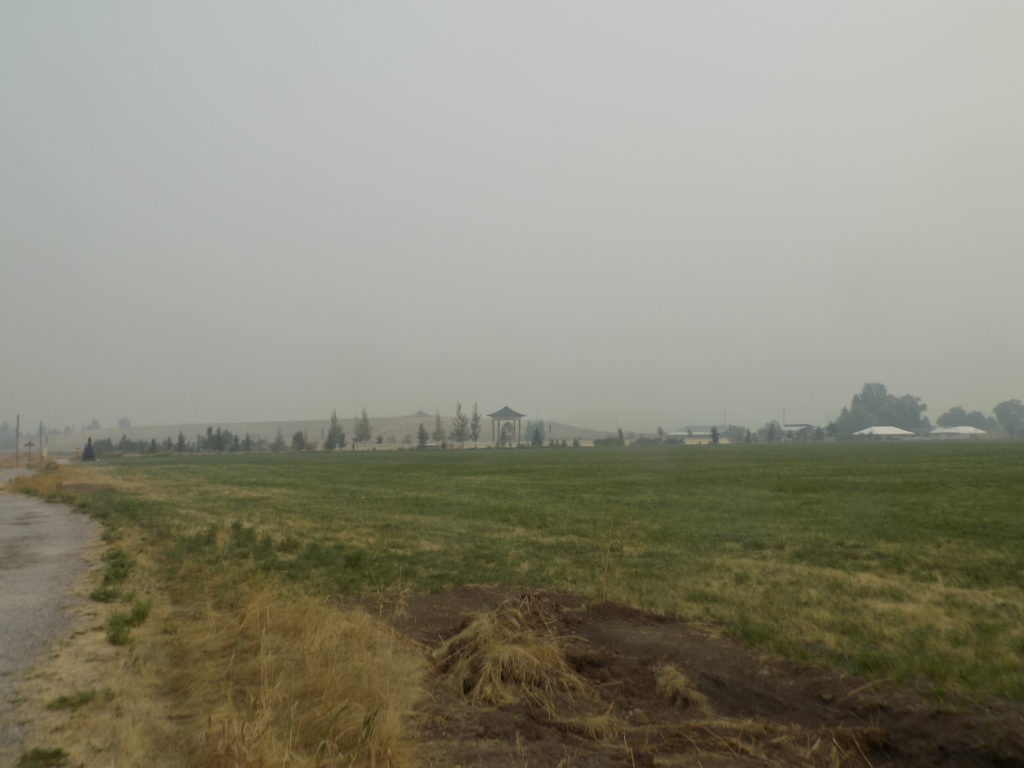Ewam in the Buddhist tradition
In many ways, Buddhism is among the world’s most flexible religions. It’s based on the teachings of Siddhārtha Gautama who spent much of his life in what is now Uttar Pradesh (an area of northeastern India bordering Nepal) and who lived perhaps as early as the sixth century BCE or as late as the fourth. (Some will assert that, because it is non-theistic and has no belief in a creator deity, Buddhism is a philosophy rather than a religion.)
For me, it’s helpful to think of the Buddha’s teachings as being the root of a thick bush from which has sprung varying traditions, interpreted philosophies, and spiritual practices each directing its adherents along a slightly different path toward Nirvana – where one escapes the cycle of suffering and rebirth – or along the bodhisattva path to reach Buddhahood where one remains in the cycle of rebirth in order to help others reach their full spiritual awakening.
Essential to Buddhism is the notion of dukkha in which we human beings crave and cling to impermanent things that are incapable of providing true satisfaction. This then keeps us in samsāra which is the endless cycle of birth, dukkha, death, and rebirth. Buddhism asserts that everything is impermanent even to the point that there is no permanent self or soul in living beings. In the Buddha’s first sermon, he described the Noble Eightfold Path as the middle way between the extremes of asceticism and hedonistic sensual pleasures as the way to end the cycle of samsāra.
(This is the path to the Garden from the parking lot.)
Over time, as Buddhism began to flourish across southeast Asia, mainly through India, Sri Lanka, Nepal, Tibet, and even into Mongolia, 18 different schools of Hinayana (an often pejorative term meaning ‘lesser path’) developed in India. Of those, three main vinaya (the regulatory framework for a monastic Buddhist community) exist in the present day. These are the Theravada, the Dharmagupta, and the Mulasarvastivada. The four Tibetan traditions, of which Ewam (pronounced Eh-wahm) in its practice of Nyingma is one subset, spring from the Mulasarvastivada school.
(The four schools or traditions of Tibetan Buddhism are Nyingma which is the oldest, Kagyu, Sakya and, the newest, Guleg.
Because its monks wear red hats, Nyingma is often called red hat Buddhism. It differs from the others in having six levels of tantric teaching as opposed to four. It has two traditions in passing on the dharma {the precepts, the practice, the Four Truths, and the Eightfold Path}. One is the “long” oral tradition from teacher to student in unbroken lineages and the other is the “short” transmission of Termas {hidden treasures} by Tertons {treasure revealers}.
The most important teaching of the Sakya sect [the second oldest] is the system of Lam Dre or the “Path and its Fruit”. Sakya uses two different forms of teaching. The first one is for a generic audience and has sutra as its basis while, the second is private education with tantra as its base.
The Kagyu School is based on its central teaching, the doctrine of Mahamudra or the “the Great Seal” which is the union of all apparent dualities. This doctrine emphasizes four principal stages of meditative practice also known as the Four Yogas of Mahamudra. This meditative practice is intended to lead the follower to achieve perfect realization of Mahamudra.
The youngest school is the Gelug. It is now the largest and most influential school of Tibetan Buddhism. The primary teachings of the Gelug School are Lam Rim, {“Stages of the Path”} and the systematic cultivation of the view of emptiness. Monks in this school wear yellow hats and you can find another brief and rather superficial discussion of the difference between Yellow Hat and Red Hat Buddhism in this post from my trip to Mongolia.)
All four Tibetan traditions combine sutra (a teaching point usually in the form of an aphorism – though Buddhist sutras are generally not as cryptic as those from other southeast Asian religions) and tantra (a systematic broadly applicable theory or practice) study with ritual and meditation. Buddhist education in each of them entails memorization of texts and formal debate of their meaning. If you’re interested in further reading, I think this site is a good starting point to learn more about Tibetan Buddhism.
In the Garden
On opening the Visitor’s Guide handout to the Garden of One Thousand Buddhas you read,
Created as the compassionate wish of Tulku Sang-ngag Rinpoche for the benefit of all beings, the meditation garden serves as an antidote to the negativities which threaten our world today. Uniting with the spirit of the sacred land on which it resides, this holy place emanates respect and reverence for all life and all traditions.
(All four Tibetan Buddhist traditions use the “tulku” system of reincarnate lamas. Tulkus and abbots also all receive the title “Rinpoche” which is an honorific meaning precious one.)
Central to the Buddha Garden is the eight spoked Dharma Wheel representing the Mahayana or Great Vehicle – one of the “Three Vehicles” of Buddhism. The others are the Root Vehicle (Hinayana) and the Diamond Vehicle (Vajrayana). In the satellite photo below, Guru Rinpoche’s lake just right of center is the main representation of the Vajrayana and the five stones to its right symbolize the Hinayana.
The eight spoked Dharma Wheel represents the eightfold path to enlightenment.
I didn’t count either, but the guide states that there are 1,000 Buddhas
atop the spokes that represent “each of the 1,000 Buddhas prophesized to appear in the aeon” and there are 1,000 Stupas (each hand cast by volunteers)
 on the Dharma Wheel itself to represent the enlightened mind. You can see my other smoky pictures here.
on the Dharma Wheel itself to represent the enlightened mind. You can see my other smoky pictures here.
Oh, the answer to the question I posed in the title for the previous entry is probably not. The latest Pew Survey estimates between 10,000 and 11,000 Buddhists in Montana.


